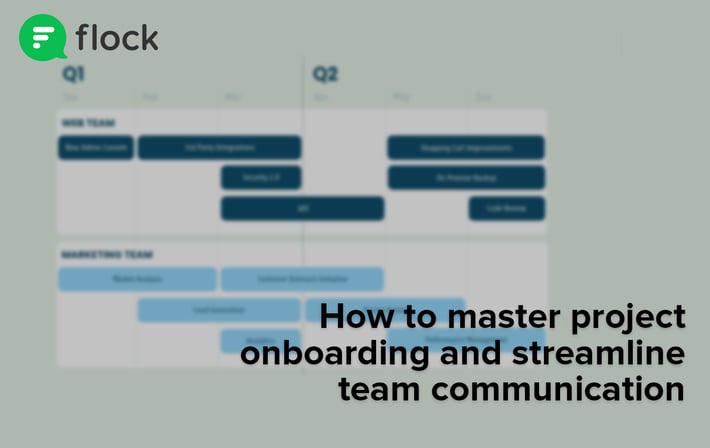
Employee engagement should be a priority at every level of your business, but the drive to achieve real change needs to come from the top.
Senior leaders need to understand what employee engagement is and why it’s so important. They need to make sure that measuring and improving it is a priority, so employees can prosper and culture can thrive.
Employee engagement is about satisfaction just as much as commitment
It’s important to define exactly what engagement is. Employee satisfaction can be measured, but many businesses look to improve employee satisfaction without proactively improving employee engagement. For example, installing a ping pong table in the game room could make your employees happier and cause them to engage, but does it make them more likely to stay with the company or care more about their jobs? Not necessarily.
Engaged employees work harder, stick around longer, and make you more money
Among the many benefits of an engaged workforce, some of the most critical are higher retention, productivity, profitability, and customer ratings. While measuring employee engagement can be tricky since it is a far more qualitative metric, these hard figures make it easy to see the effects that employee engagement can have.
Click here to jump to the list!
Engaged employees offer more through discretionary effort
Want to know what engaged employees look like? They’re the ones going the extra mile without being asked. They take their time in an exchange with a customer even if they’re right at the end of their shift. They’re passionate about their work and more productive for it.
Consider the 600 engaged Apple engineers that developed and deployed iOS 10 in under 2 years, while their 10,000 disengaged Microsoft counterparts took 5 years to roll out Vista. When employees are engaged, they are more productive, year after year, leading to huge advantages over the competition as time goes on.
Southwest Airlines is famous for its highly engaged employees who go the extra mile to delight customers and inspire customer loyalty that is unheard of in the industry. Have you seen the flight attendant who amused passengers by rapping safety announcements?
While you may be able to spot overt signs of highly motivated employees, measuring and improving engagement across your business can be more difficult. Here are 8 steps you can take to assess your current levels and begin to improve them:
- Measure engagement
- Start at the top
- Check-in
- Track attrition and profitability
- Define a vision
- Realize your culture
- Give tools for success
- Keep it going
1. Measure engagement through Gallup’s Q12 or NPS
Executives can measure engagement by asking the right questions… and the traditional 50-question annual survey is not the best way to achieve this. Many top consultancies use far fewer questions, but industry pacesetter Gallup has refined the approach to 12 questions covering topics from workplace expectations to having a best friend in the office.
More and more companies are also using a modified version of the Net Promoter Score (NPS), which was originally devised to measure customer engagement. A few tweaks make the questions suitable for employees instead, giving you a snapshot figure for what percentage of respondents are passionate or active promoters of the business.
2. Start at the top and work down into the details
By asking fewer questions at the beginning, you can home in on weaknesses in engagement. San Francisco-based workflow management company Wrike uses just one question for their top-level key result: “Is Wrike the best company you’ve ever worked at?”
From there, you can delve into the details of specific areas. Starting with high-level questions like “Do you have opportunities to grow?”, you can then dig deeper by following up with “Does your manager offer you enough support” and “Do you feel empowered to pursue your own development?”
3. Check-in often and make it easy (mobile-friendly!)
It’s no good gathering engagement data once a year; by the time you realize that employees have been unhappy for the last 11 months, chances are you’ll have lost some of them!
Instead, the best in the business are checking-in far more frequently. Intel runs quarterly polls to gauge employee satisfaction and commitment. Meanwhile, Amazon, having transformed their approach to employee engagement after previously less-than-stellar reviews, polls workers daily in an effort to address day-to-day inconveniences.
4. Track attrition and profitability
We’ve mentioned that employee engagement results in positive changes for your business and its bottom line, so you should be measuring these key metrics to see if your increased efforts at engagement are having a noticeable effect.
And what should those efforts involve?
5. Define a vision everyone can commit to
Engagement comes from buying into the ethos and purpose of the company and linking that to the day-to-day activities required of employees. If your business has a clear vision, it’s much easier to understand how an individual’s contribution can fit into that. Take Reelgood, the streaming guide, whose vision statement is simple and ambitious: “To be the place that people go to when they want to watch any TV show or movie.”
While McDonald’s has a vision statement on the lengthier side, it does clearly define exactly what it expects of its employees: “To be the best quick service restaurant experience. Being the best means providing outstanding quality, service, cleanliness, and value so that we make every customer in every restaurant smile.”
6. Put processes in place to realize your culture
It’s all very well saying that you want to foster certain values within your business, but this won’t happen without effort on your part. Consider what you can do to ensure that the behaviors you’re looking for are encouraged.
Google perfectly demonstrated its commitment to creativity and innovation with the “20% time” rule, where employees were encouraged to spend time on side projects, the likes of which spawned Gmail and Google Maps among many successful others.
John Lewis is another great example. While merely calling employees “partners” might have appeared to be a gimmick, the fact that the company truly invests in an employee ownership model has seen it successfully grow into the UK’s largest employee-owned business. Every John Lewis partner receives the same percentage bonus on their salary from the annual profits and their voice is heard through 3,000 elected representatives within the business.
7. Give employees internal communication tools
Technology has revolutionized the way we communicate, but not all businesses have kept up at the same pace as consumers. It’s crucial to make the most of the ever-connected culture that has evolved and use that to drive engagement in the workplace.
 Employees will be more engaged when they are able to build bonds with colleagues, work together, and get more done. Team messaging platforms make this easier than ever. You can also use these tools to connect leadership with the rest of your employees. Build your own method of “conversational leadership,” like daily insights or dedicated channels where leaders answer questions.
Employees will be more engaged when they are able to build bonds with colleagues, work together, and get more done. Team messaging platforms make this easier than ever. You can also use these tools to connect leadership with the rest of your employees. Build your own method of “conversational leadership,” like daily insights or dedicated channels where leaders answer questions.
8. Keep measuring and engaging
The most important thing to remember with any transformational efforts in your business is that instant success isn’t always possible. You may start moving the needle, but to achieve long-term and significant change, you need to continuously measure the effectiveness of your efforts. Keep reaching out to employees, gauging engagement, and asking for feedback.
Encourage employees to offer constructive criticism on new initiatives through quick and convenient channels and use these results to keep improving the measures you put in place.
Employee engagement is an ongoing goal as people and attitudes change, but the higher you keep it, the better off your business will be.






